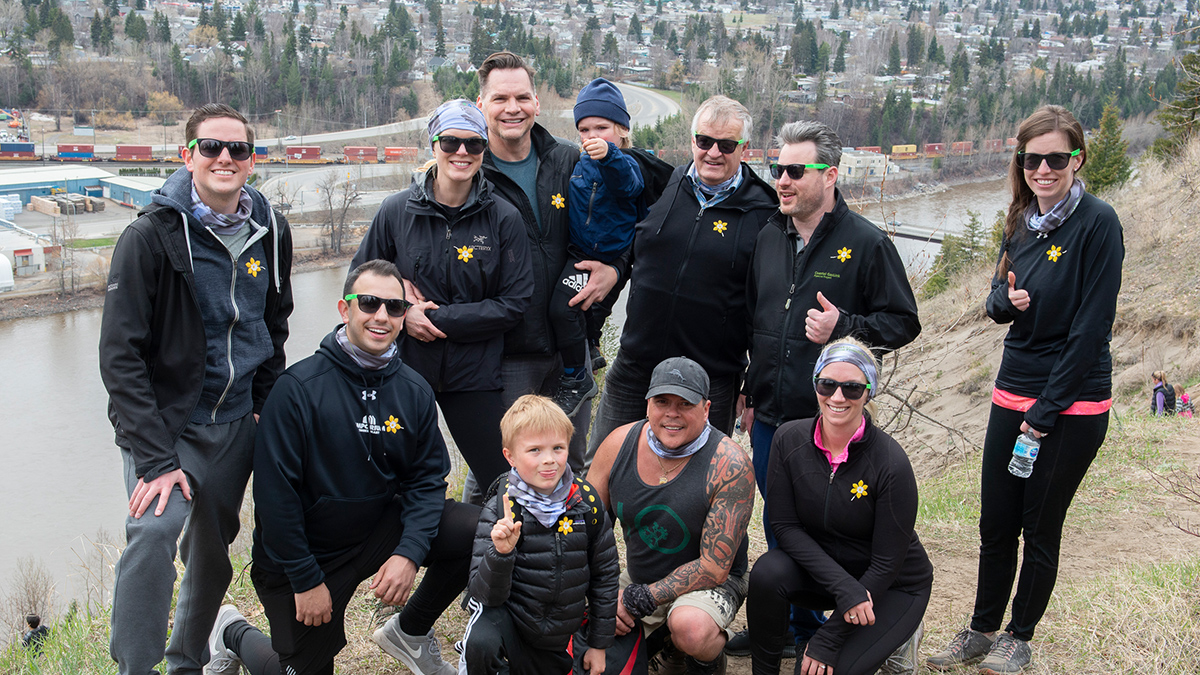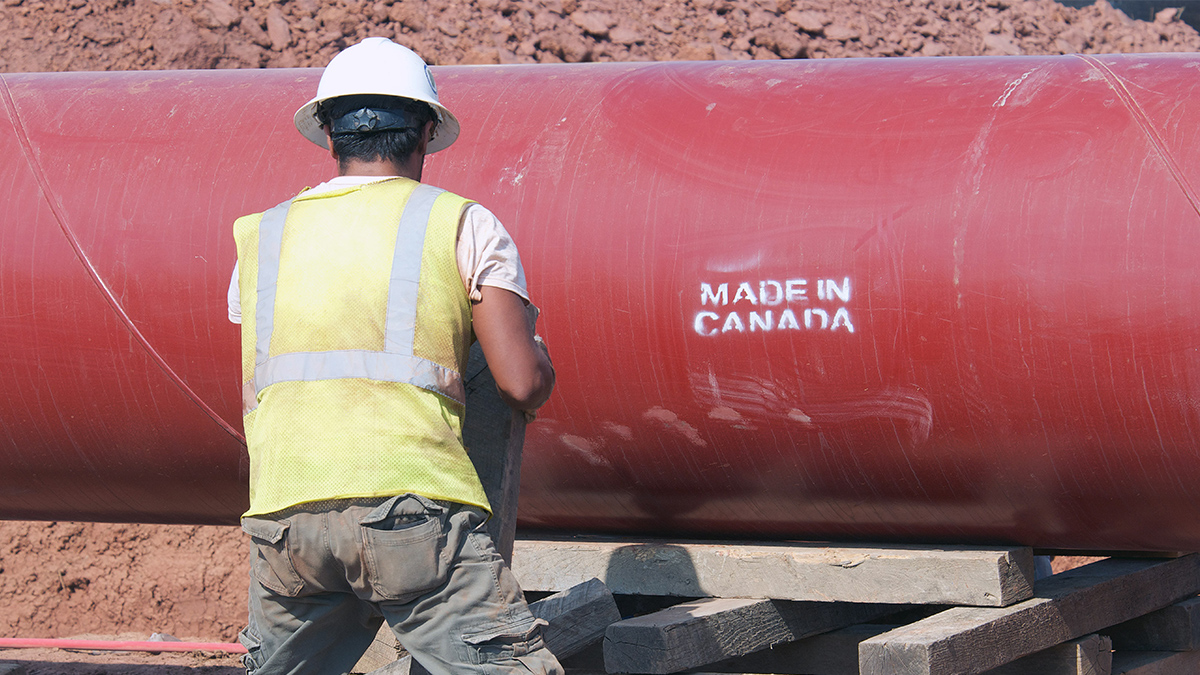Apr 29, 2019
Click Before You Dig — Landowners
Landowners and neighbours
Hugo Bonjean
Owner of Spirit Hills Winery
Excavation
Whether you’re planting a tree, digging a trench or building a fence, you need to be aware of the underground utilities — including gas, electric and water — on your property before you dig. Safe digging is as simple as calling your local One-Call Centre or visiting ClickBeforeYouDig.com three to five business days before starting your job.
Approvals for working around TransCanada’s facilities
To ensure our pipelines and facilities operate safely, written consent from TransCanada must be obtained in Canada before any of the following:
- Constructing or installing a facility across, on, along or under a TransCanada pipeline right-of-way
- Conducting ground disturbance (excavation or digging) on or within the prescribed area (30 metres from the centerline of a pipeline)
- Driving a vehicle, mobile equipment or machinery across a TransCanada pipeline right-of-way outside the travelled portion of a highway or public road
- Using any explosives within 300 metres TransCanada’s right-of-way
- Use of the prescribed area for storage purposes
How to apply for written consent
- Determine the location of your work relative to TransCanada's facilities.
- When planning, and before any of the work or activities, listed above, can begin, a request for written consent must be submitted to TransCanada through our online application form
- We no longer accept applications through email
- Location of the work is required, along with the proximity to TransCanada's rights-of-way
- This information can be obtained through survey plans, or through a locate request
- Make a locate request either online (ClickBeforeYouDig.com) or by calling your local One-Call Centre.
- The One-Call Centre will notify owners of buried utilities in your area, who will send representatives to mark these facilities with flags, paint or other marks, helping you avoid damaging them. Often written consent for minor activities can be obtained directly from a regional TransCanada representative through a locate request.
- Apply for written consent using TransCanada's online application form or call 1.877.872.5177.
- Application assessment and consent. Once your information has been assessed and potential impacts have been evaluated, TransCanada may:
- Grant consent without any conditions
- Grant consent that requires certain conditions to be met to assure safety, or
- Not grant consent
Agriculture safety
TransCanada wants to ensure the safety of everyone living or working near our facilities, which includes Canada’s active farming community.
Routine farming practices can be completed without notice to TransCanada or contacting the One-Call Centre, but ground disturbance and some other activities can pose a risk to underground utilities and may require written consent.
Visit ClickBeforeYouDig.com before undergoing any of the following activities:
|
Ground levelling |
Earth moving |
Augering |
|
Sludge spreading |
Drainage ditch clean out |
Stockpiling/storage/parking |
|
Clearing/brushing/grubbing |
Drain tile installation |
Blasting activities |
|
Reducing or adding soil cover |
Terracing |
Building construction |
|
Deep tilling/sub-soiling |
Fencing and landscaping |
Controlled burning |
|
Trenching |
Excavation |
|
Dig with C.A.R.E.
 Click before you dig
Click before you dig
- Visit ClickBeforeYouDig.com or call your local One-Call Centre
 Allow time for marking
Allow time for marking
- Allow three (five in Ontario) business days across Canada
 Respect the marks
Respect the marks
- Lines are marked by flags, paint or other markers (normally yellow for pipelines)
 Excavate carefully
Excavate carefully
- Hand dig to determine the exact locations of pipelines. All digging must take place during the time allotted by the TransCanada representative
Consequences of unsafe digging
 Interrupted services
Interrupted services
- Interrupted services, such as electricity, natural gas and water
- An average of 1,600 underground infrastructures are stuck annually in Canada*
*2015 CIRANO, Socio-Economic Cost Assessment for Damage to Underground Infrastructure
 Fines and repair costs
Fines and repair costs
- Costs to repair underground utility line(s)
- National Energy Board administrative monetary penalties (fines):
- For individuals, the daily penalty could range from $250 to a maximum of $25,000 per violation
- For companies, the daily penalty could range from $1,000 to a maximum of $100,000 per violation
- Visit www.neb.gc.ca for more information
- Provincial bodies can also fine individuals or companies
 Risk of serious injuries or death
Risk of serious injuries or death
- Since 2003, Ontario has had seven fatal accidents due to damaged underground infrastructures by excavation work and British Columbia has had two fatal accidents and six seriously injured workers since 2008*
*2015 CIRANO, Socio-Economic Cost Assessment for Damage to Underground Infrastructure
Signs of a potential pipeline leak
Although a pipeline leak is rare, it is important to know how to recognize the signs. Use your senses of smell, sight and hearing to detect a potential pipeline leak.
What you may smell
Natural gas
- Transmission lines that transport natural gas across Canada are rarely odourized, but may have a slight hydrocarbon smell. Distribution lines that transport natural gas to homes and businesses are odourized and could smell skunk-like or similar to rotten eggs.
Oil
- Many petroleum products have a distinct smell. Crude oil can possess a rotten egg, gasoline, tar or skunk-like odor.
What you may see
Natural gas
- Dead or dying vegetation on or near a pipeline in a normally green area
- Water bubbling or blowing into the air at a pond, creek or river
- Dirt being blown or appearing to be thrown into the air
- An accumulation of ice or frost over the pipeline (in the summer)
Oil
- Amber to black liquid
- Rainbow sheen or black liquid on top of water
- Discoloured vegetation on or near a pipeline in an area that is usually green
- Stained or melted snow/ice over pipeline areas
What you may hear
Oil or natural gas
- A hissing, roaring or bubbling sound
Steps to take in the event of a pipeline leak
If you witness any of the signs listed above, or any other unusual sights, sounds or smells near a pipeline location, follow these steps immediately:
- Leave the area on foot – don’t use motor vehicles or any equipment that could be a potential ignition source.
- Move to a safe location and call ‘911’.
- Call TransCanada’s emergency number. The emergency number can also be found on all TransCanada pipeline marker signs.
- Warn others to stay away.
Documents — Canada — Landowners and neighbours






